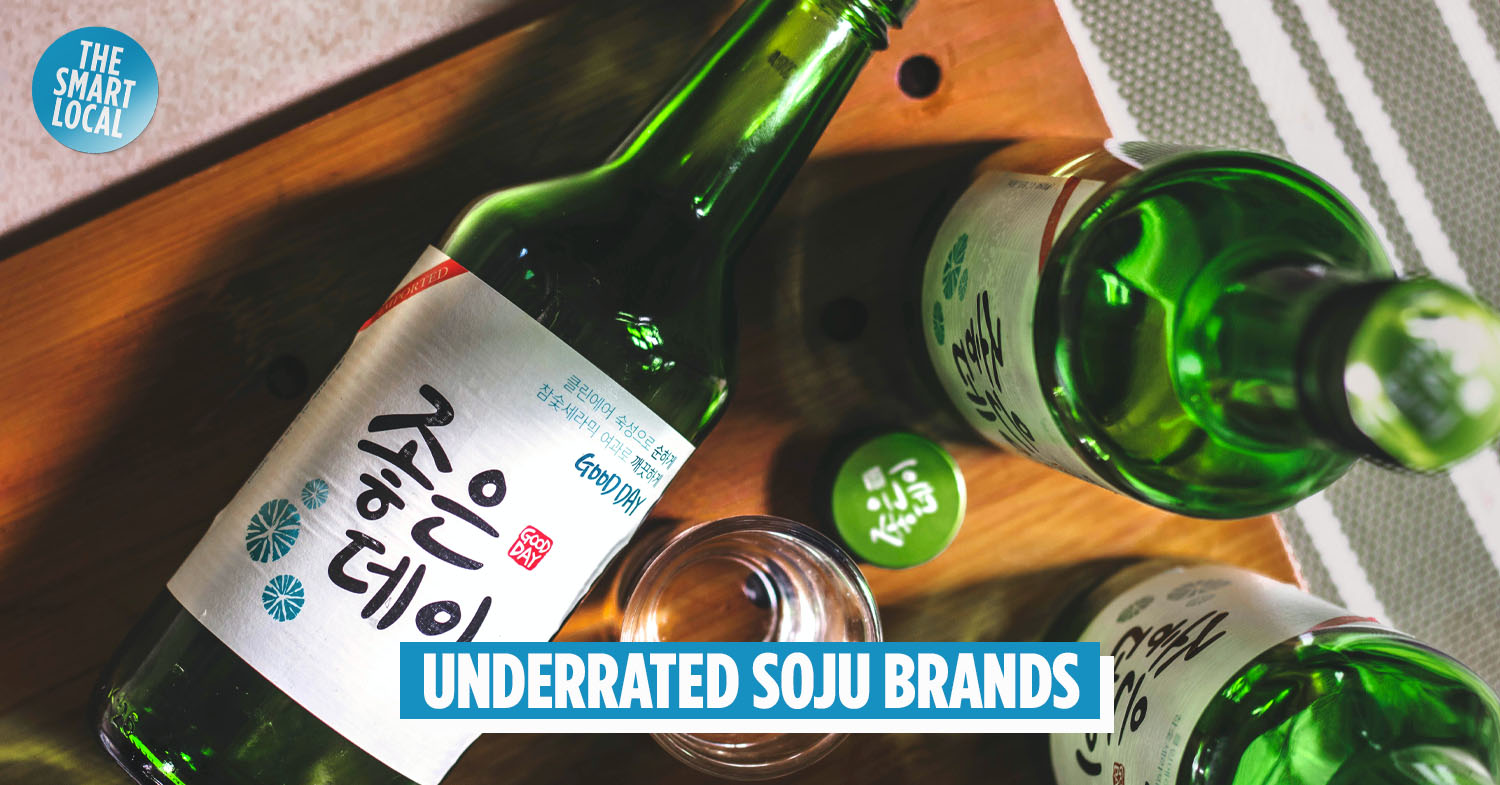Regional soju brands in Korea
As Korea’s representative alcoholic beverage, soju is loved by both locals and fans of K-culture worldwide. It’s cheap, relatively strong, and considered a must-try when visiting Korea.
The most recognisable soju brands in Korea are Chamisul and Chum Churum, from Seoul and Gangwon Province respectively. However, there are actually numerous regional brands beyond those two, each with distinct features that add to the drink. As such, we’ve put together a list of soju brands in Korea that are worth trying.
Seoul – Hite Jinro’s Chamisul 참이슬
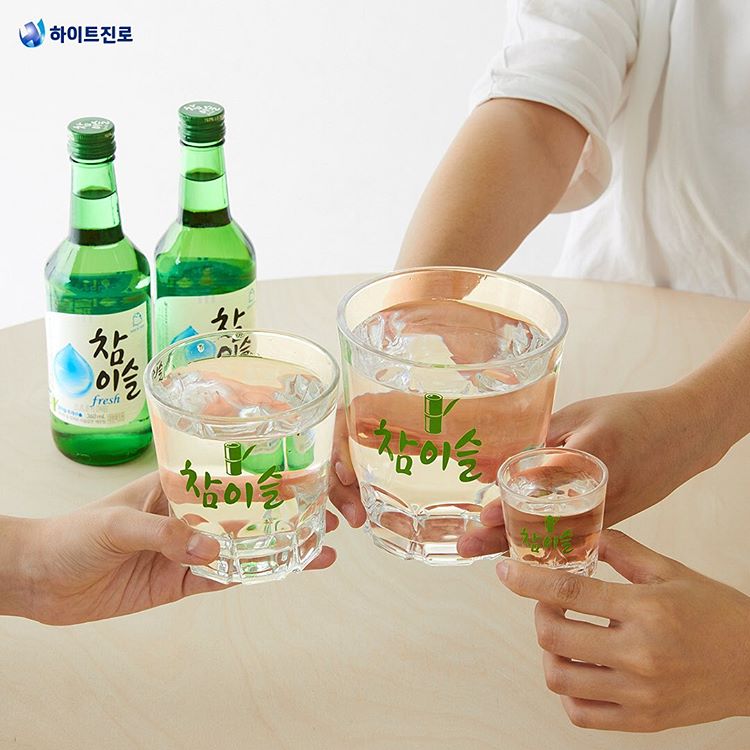
Chamisul – the national soju
Image credit: @official.chamisul
Famous amongst locals and internationals alike, Chamisul is currently the top-selling distilled liquor in the world. It is no wonder then that Koreans call it gukmin soju (national soju).
Back in the day, the law mandated that alcohol companies were allowed to produce soju in only one city or province and had to sell at least half their stock there. This meant that it was difficult for a company based in a certain city to sell its products in another part of the country.
Jinro – which manufactures Chamisul – dominated Seoul. This made it easy for the brand to quickly spread to the rest of the country after the law limiting production and sale of soju in multiple cities was lifted.
The brand claims to use 100% natural ingredients and only natural vegetable additives. Chamisul prides itself on its clean taste, created by filtering the alcohol through bamboo charcoal at least 4 times.
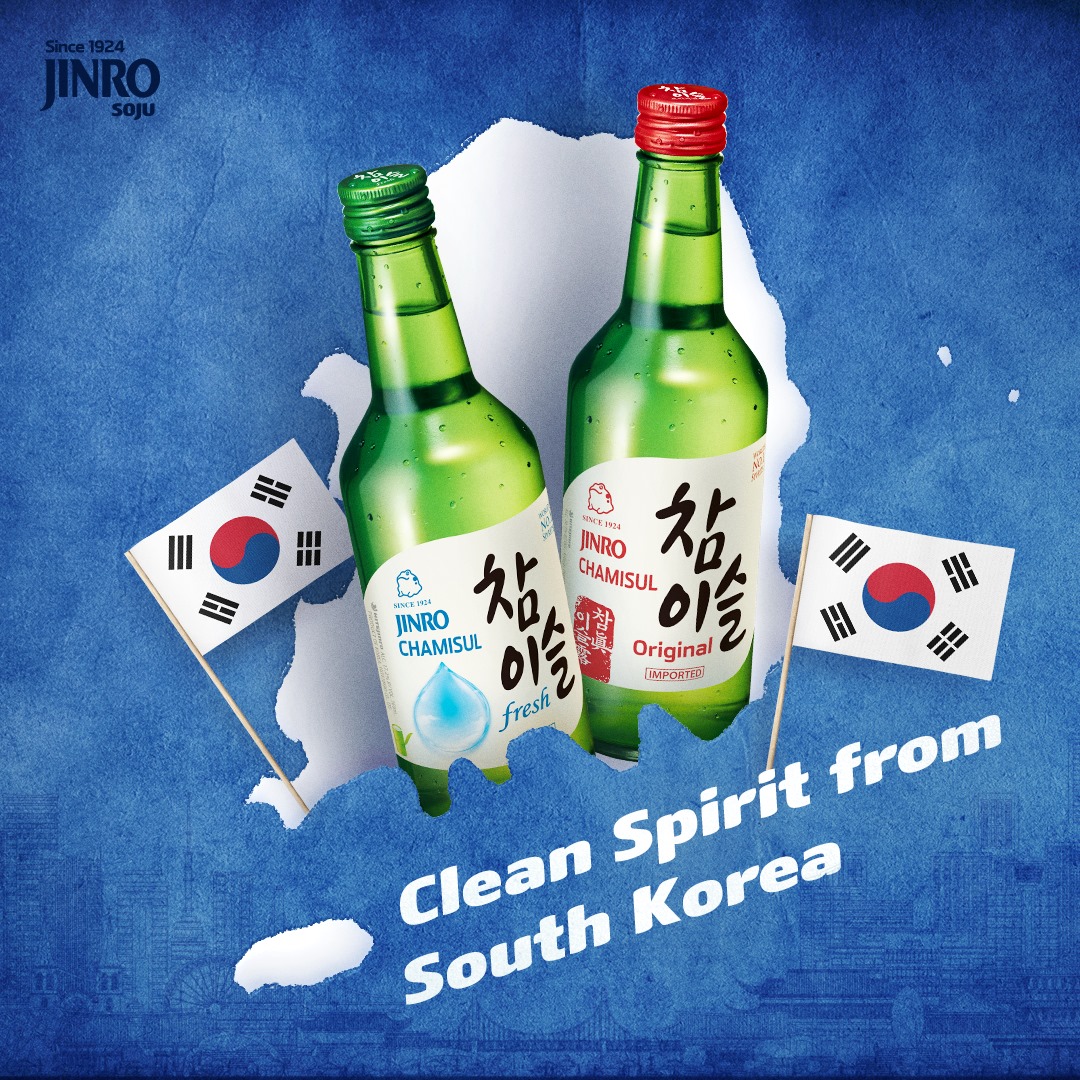
Chamisul Fresh and Chamisul Original
Image credit: HiteJinro Global
Chamisul has 2 different levels of alcohol content – 16.9% (Fresh) and 20.1% (Original).
Gangwon Province – Lotte Chilsung Beverage’s Chum Churum 처음처럼
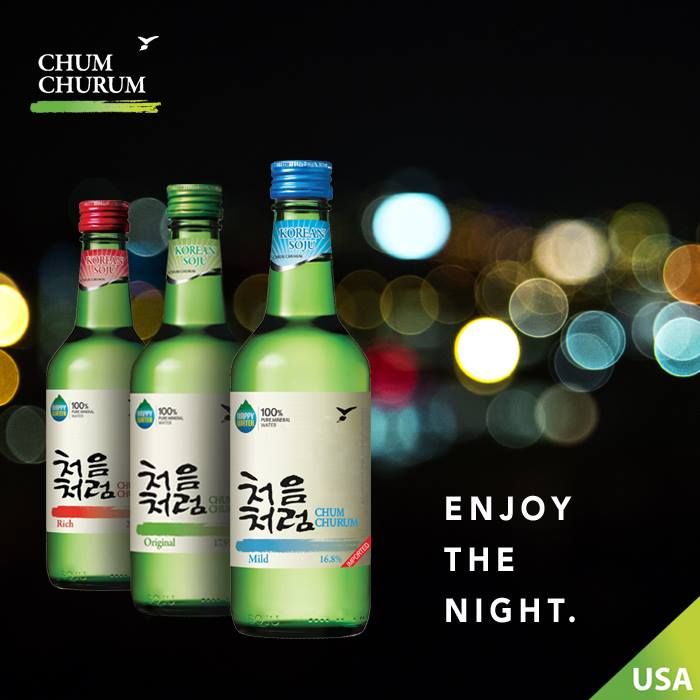
Three different levels of Chum Churum
Image credit: Chum Churum USA
Based in Gangwon province, Chum Churum easily spread to the capital city when national distribution of soju became legal. Today, it is the second most widely sold soju brand.
Chum Churum means “like the first time” in Korean, and the name is meant to encourage consumers to treat each day like a fresh start.
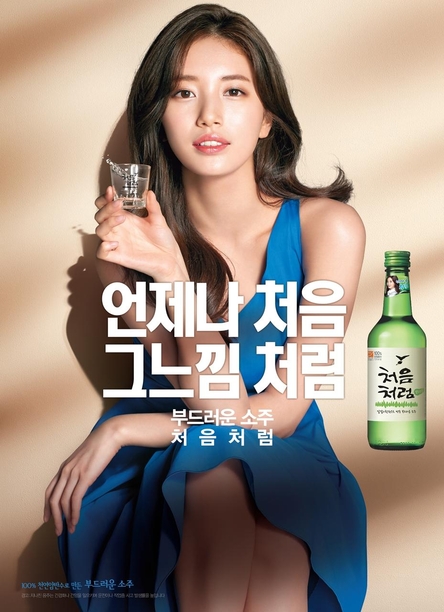
Suzy poses with the caption, “It always feels like the first time.”
Image credit: ChosunBiz
This brand of soju is made using alkaline water enriched with minerals. This supposedly makes the alcohol easier to drink, leading to less of a hangover.
Chum Churum has 3 different levels of alcohol content – 16.5% (Mild), 16.9% (Regular), 21% (Rich/Strong).
Busan – Daesun Distilling’s C1 시원
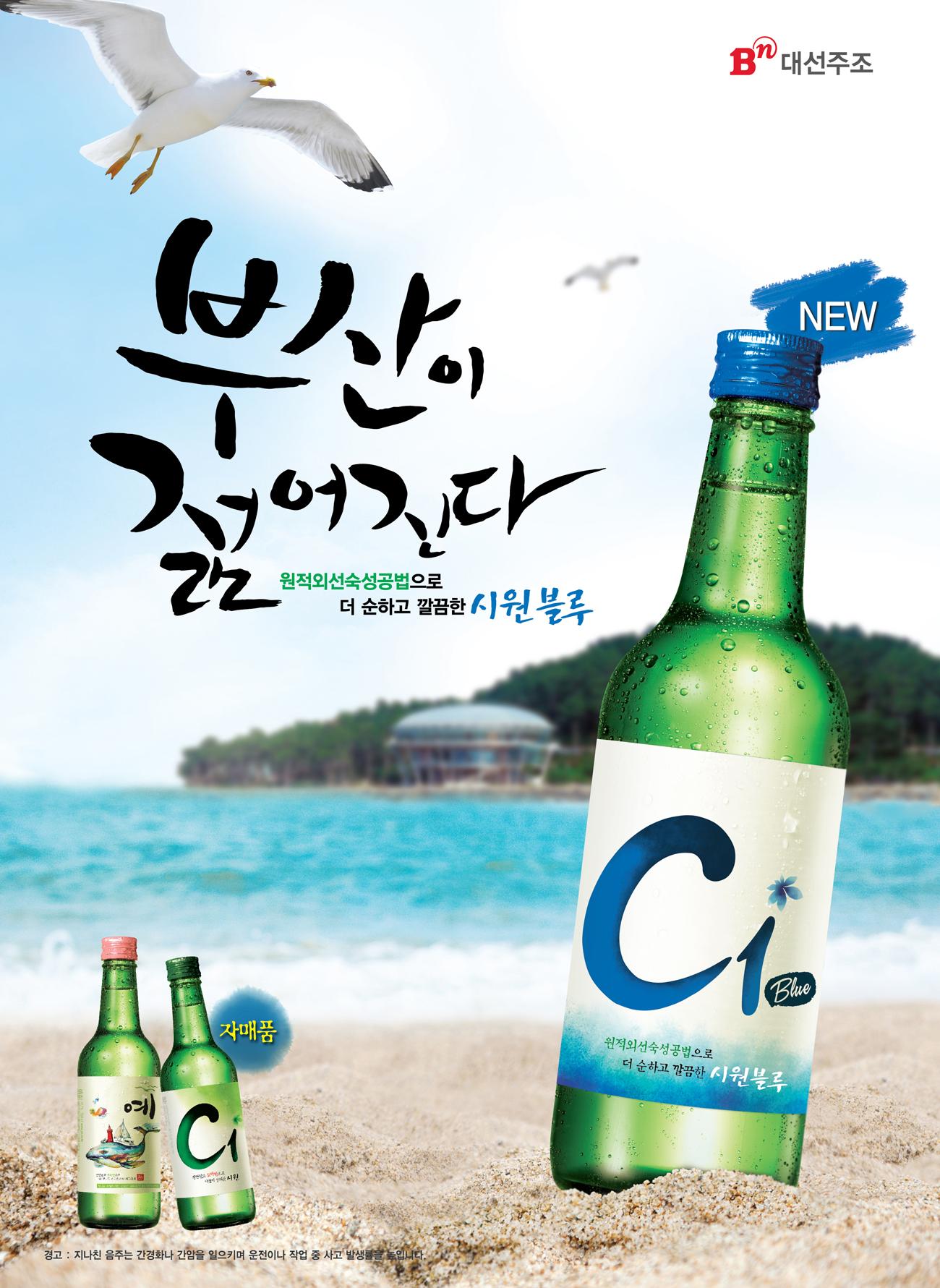
Image adapted from: Yonhap News Agency
As the largest distillery in Busan, Daesun’s main line of soju was initially simply named after the company. This was eventually renamed C1.
C1 is made with natural bedrock water from Mount Samgak-san, giving it a clean aftertaste. The soju also includes aspartic acid, a type of amino acid that supposedly helps people feel better after drinking.
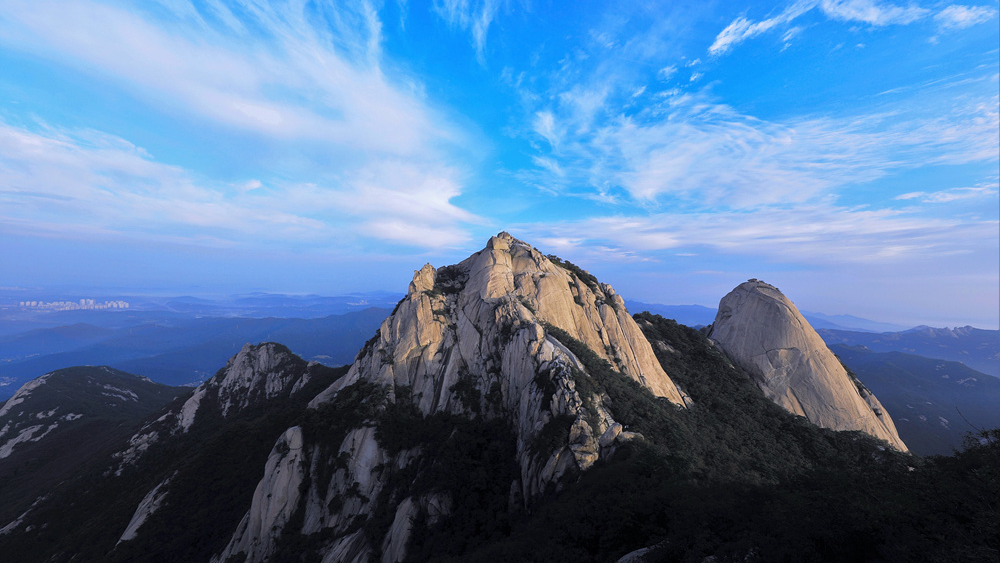
Mount Samgak-san
Image credit: 물망초
It is one of the smoothest soju available as the alcohol is aged using a process involving sound vibrations. C1 has an alcohol content of 18%.
Gwangju and South Jeolla – Bohae Brewery’s Yipsejoo 잎새주
 Yipsejoo Brother and Yipsejoo
Yipsejoo Brother and Yipsejoo
Image credit: kakaostock
Yipsejoo uses clean mineral water from a 235m-deep well in Southern Jeolla Province. This then undergoes several rounds of filtration to obtain a pure and fresh taste.
The brand’s claim to fame lies in the addition of organic Canadian maple syrup, which explains the logo used. The syrup acts as a natural sweetener – the more you shake the soju, the sweeter it becomes.

Hyeri from Girl’s Day shaking Yipsejoo to make it sweeter
Image adapted from: 보해양조주식회사
It has also created a sub-line called the Brother Series, which includes several versions of soju with a lower alcohol content of 17.5%. Regular Yipsejoo has an alcohol content of 19%.
Ulsan and South Gyeongsang – Muhak’s Good Day 좋은데이
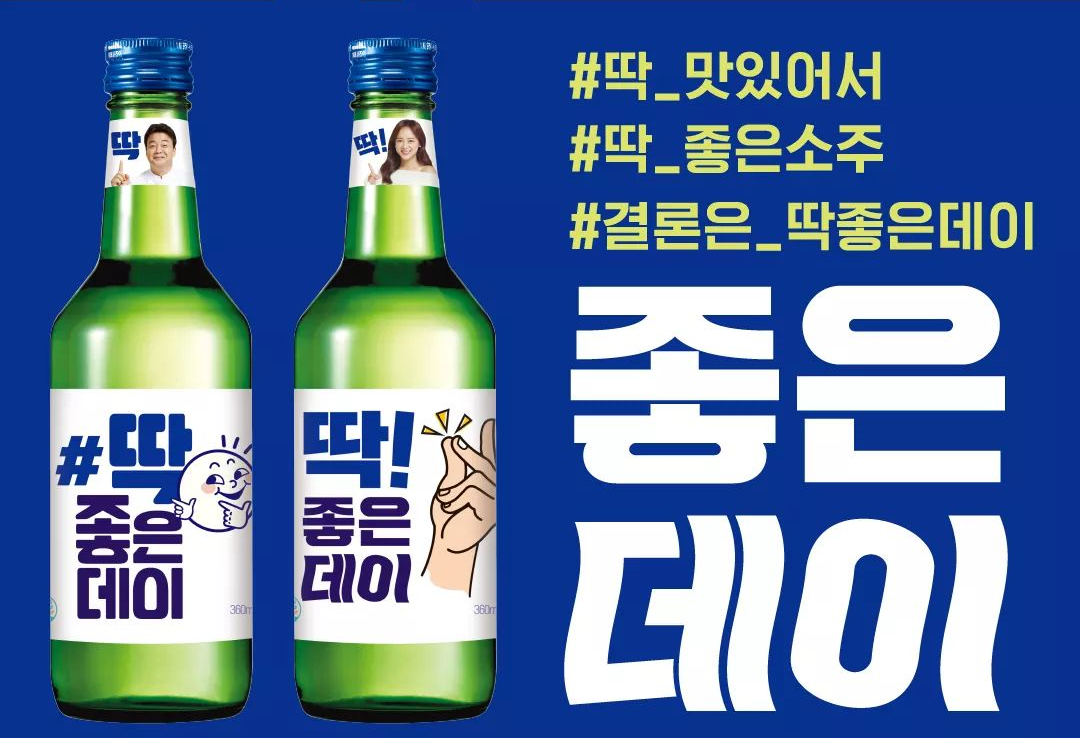
Image adapted from: Namu Wiki
Good Day is another brand that sources its ingredients from the mountains. It uses naturally alkaline mineral water from Jirisan, supplemented with amino acids for health benefits.
The brand is produced by Muhak, which is headquartered in Changwon. Its sales are also high in neighbouring regions such as Busan, Ulsan, and Gyeongnam.
Good Day was the first brand to release soju with a lower alcohol content – it launched its regular line with 16.9% alcohol content, whereas other brands did so at about 20%. In fact, soju with lower alcohol content only became more common across other brands after fruit-flavoured soju – which contains about 12-14% alcohol – gained popularity.
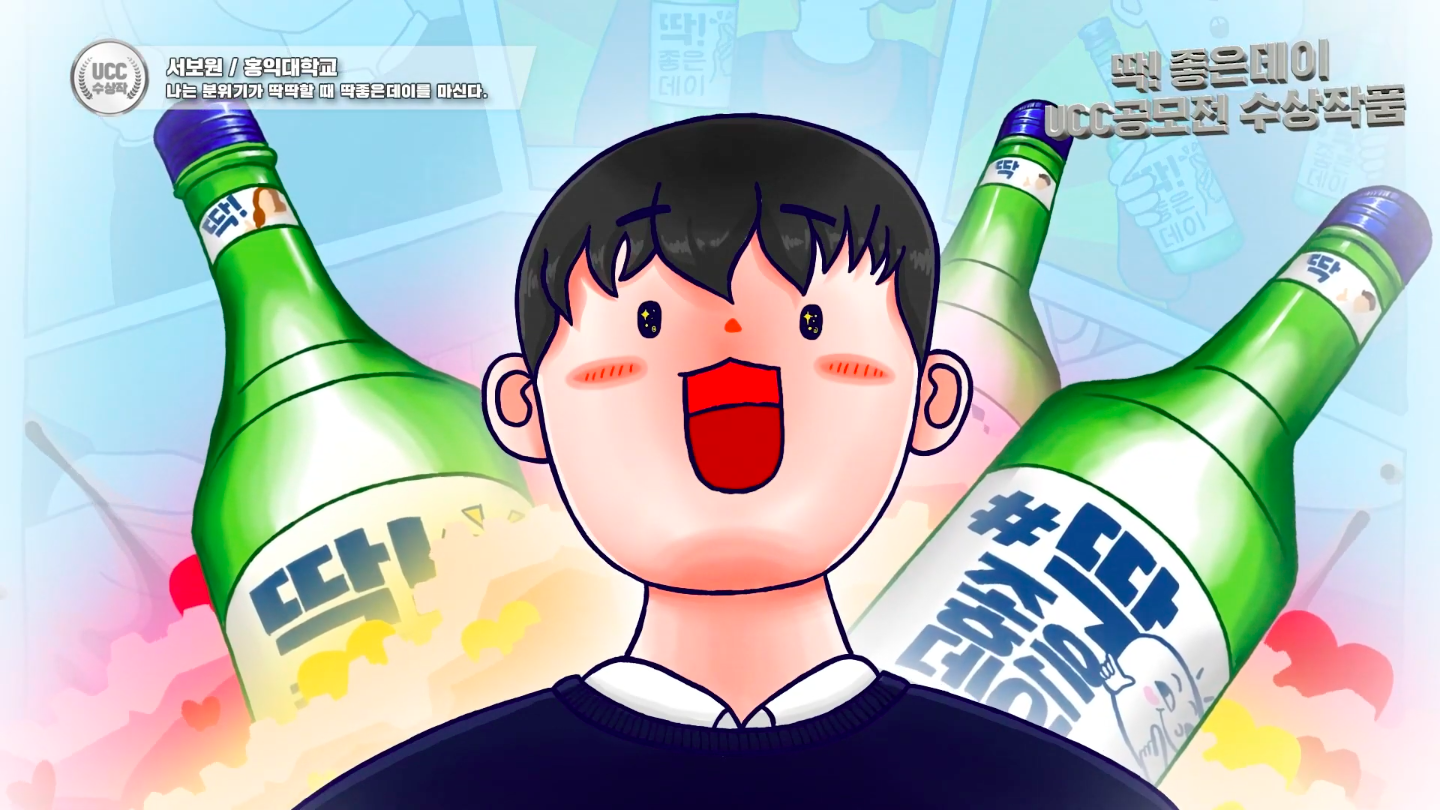
An animation of university students drinking Good Day
Image credit: 딱좋은데이
Back then, it was difficult to find Good Day outside of university districts in Seoul as soju with lower alcohol content was only popular with students. However, this is no longer the case – you can easily purchase Good Day at most convenience stores today.
North Chungcheong – Chungbuk Soju’s Cool Cheongpung 시원한 청풍
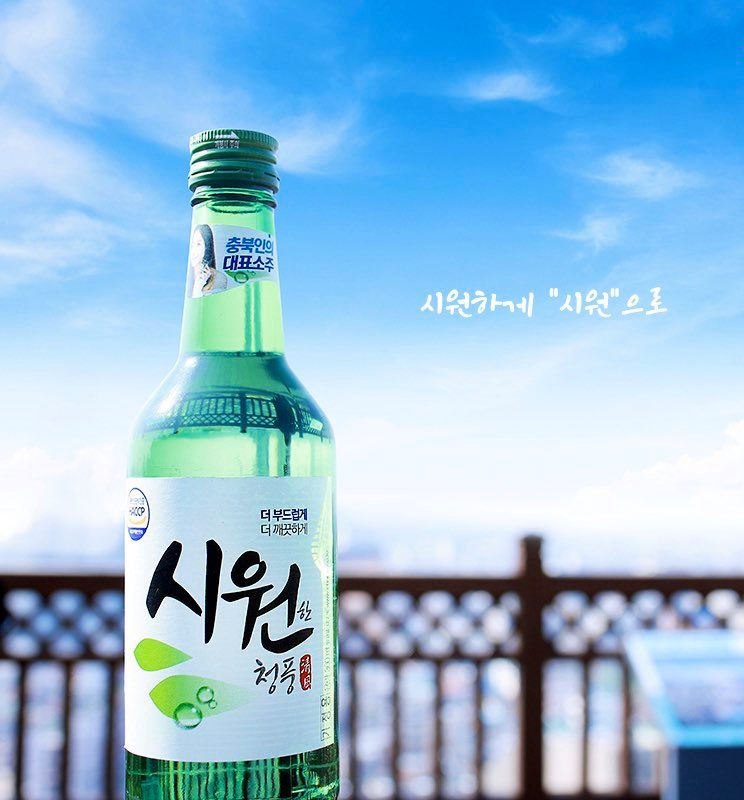
Image adapted from: Cool Soju
Cool Cheongpung uses Chojeong mineral spring water, which was apparently also used by King Sejong to treat his eye infection while he created hangeul (the Korean alphabet).
For their more health-conscious consumers, the brand has added asparagine, a type of amino acid that is used in the metabolism of toxins, to alleviate hangovers and protect their livers. It also helps that its alcohol content is only 17.5% – a fair bit lower than some other brands on this list.
Cool Cheongpung is currently only available for purchase in North Chungcheong.
Daegu and North Gyeongsang – Kumbokju’s Delicious Charm 맛있는 참
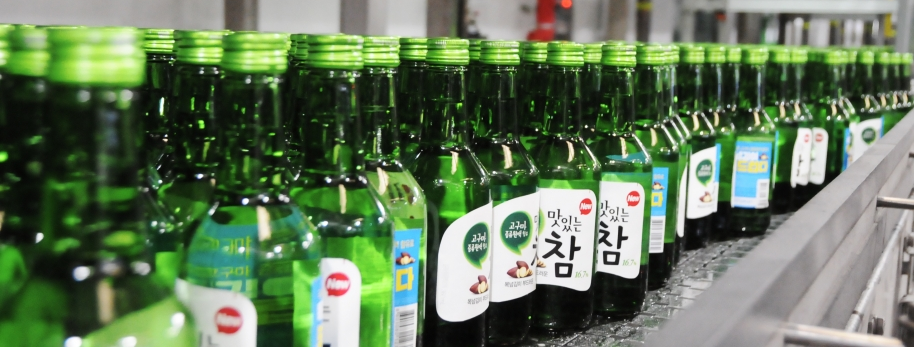
Bottles of Delicious Charm’s sweet potato soju
Image adapted from: Daily NTN
In North Gyeongsang and Daegu, Kumbokju’s Delicious Charm dominates as a homegrown brand. Their soju is made only with pure grains such as rice, barley, sweet potatoes, and tapioca that hail from the countryside.
What’s most charming about this brand is that they add xylitol – a type of artificial sweetener – into their soju to improve its taste.
Delicious Charm contains 16.9% alcohol.
Daejeon and Chungcheong – Mackiss’s O2Linn O2린/이제 우린

O2Linn before and after its rebranding
Images adapted from: KMUG and buyKOREA
Nicknamed “oxygen soju”, O2Linn sets itself apart as a large amount of oxygen is dissolved into the alcohol. This supposedly shortens the hangover recovery period and instead invigorates the consumer.

O2Linn says, “Consumers will get up 30 minutes earlier due to 3 times as much oxygen.”
Image adapted from: 피키픽처스 Piki Pictures
Coupled with a low alcohol content of 16.9%, this soju is the go-to choice for many women in the region.
While it has been rebranded as Yije Woorin (Now We Are), it’ll always be “oxygen soju” in our hearts.
Jeju Island – Hallasan 한라산
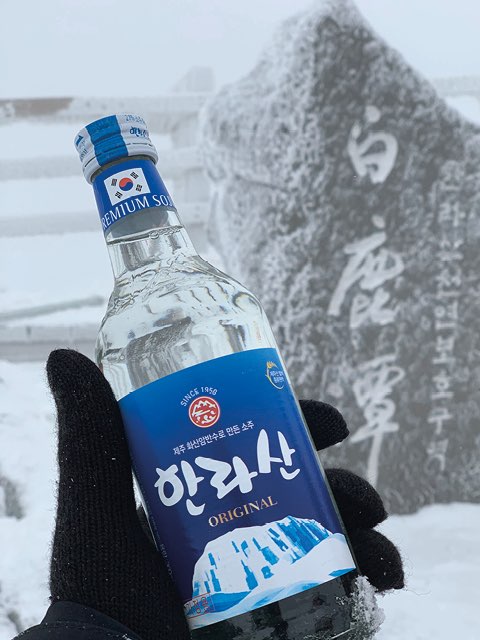
Having Hallasan on Hallasan in the winter
Image credit: gabezrh
If you’ve ever been to Jeju, chances are you’ve come across these clear bottles of soju. Named after the highest peak in Korea, Hallasan soju is filtered through charcoal made from trees grown on its namesake mountain.
The undiluted alcohol is first frozen to remove impurities and unrefined fragrances, making it one of the smoothest soju on the market.
Its velvety but crisp taste goes well with seafood and hui (Korean sliced raw fish). 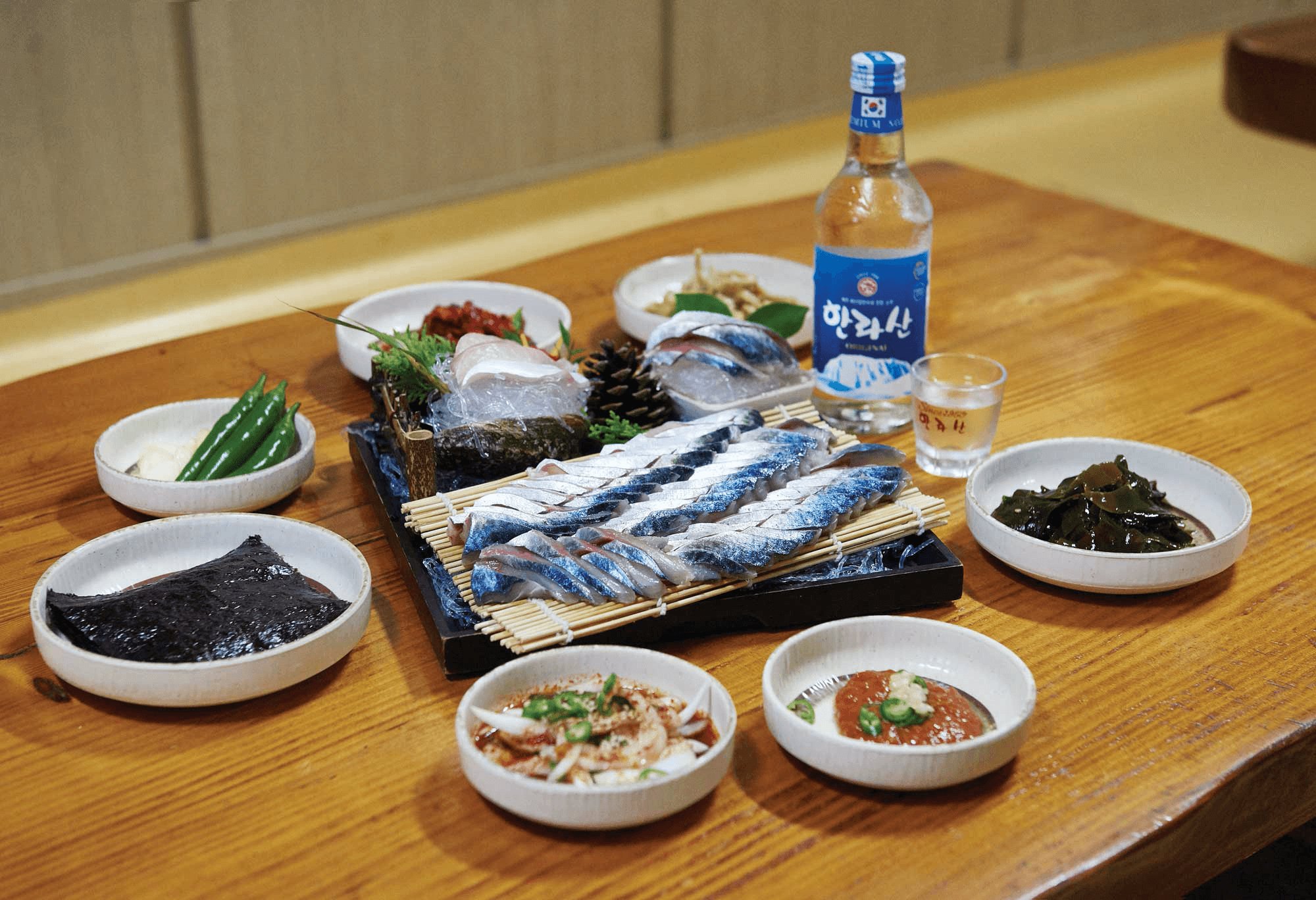
Image credit: Olive
Don’t be fooled by its pure flavour though – the original version of Hallasan has the highest alcohol content at 21%. Those who prefer something lighter can try the mild version containing 17% alcohol.
Bonus: Newtro-style soju
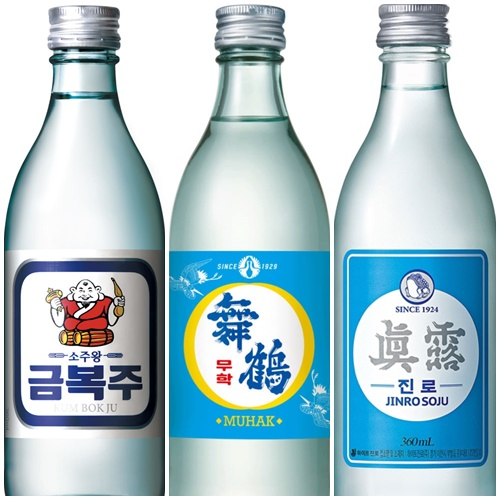
From left to right – Kumbokju’s Soju King, Muhak, and Jinro is Back
Image adapted from: BUSINESSplus
While not exactly a brand per se, newtro-style soju has been gaining traction in South Korea recently. “Newtro” refers to a fusion of “new” and “retro”, with an aim to reinterpret the old to reflect the new.
Several brands brought back newtro versions of discontinued soju, branding them with distinctive logos from the ‘70s – Hite Jinro’s Jinro Is Back has its iconic toad character, while Kumbokju’s Soju King Kumbokju is emblazoned with its old king logo. Muhak also introduced their own newtro soju called Cheongchun (youth).
These newtro iterations come in transparent blue bottles, which were used in the past before brands switched over to the green ones you see today.

Image adapted from: @a._.rin818
Soju brands in Korea besides Chamisul
While soju may be a national drink, the different regional soju brands in Korea have each produced their own version which reflects the regions’ unique characteristics. So the next time you’re in a particular province, give their local brand of soju a try.
Read more Korean culture articles here:
- Drinking culture in Korea
- Korean drinking games
- Easy Korean cocktails
- Underrated Korean street food
- Modern hanbok brands to shop online
Cover image adapted from: vkeong
